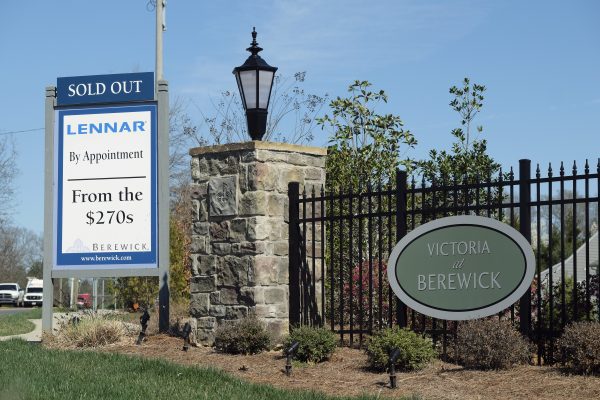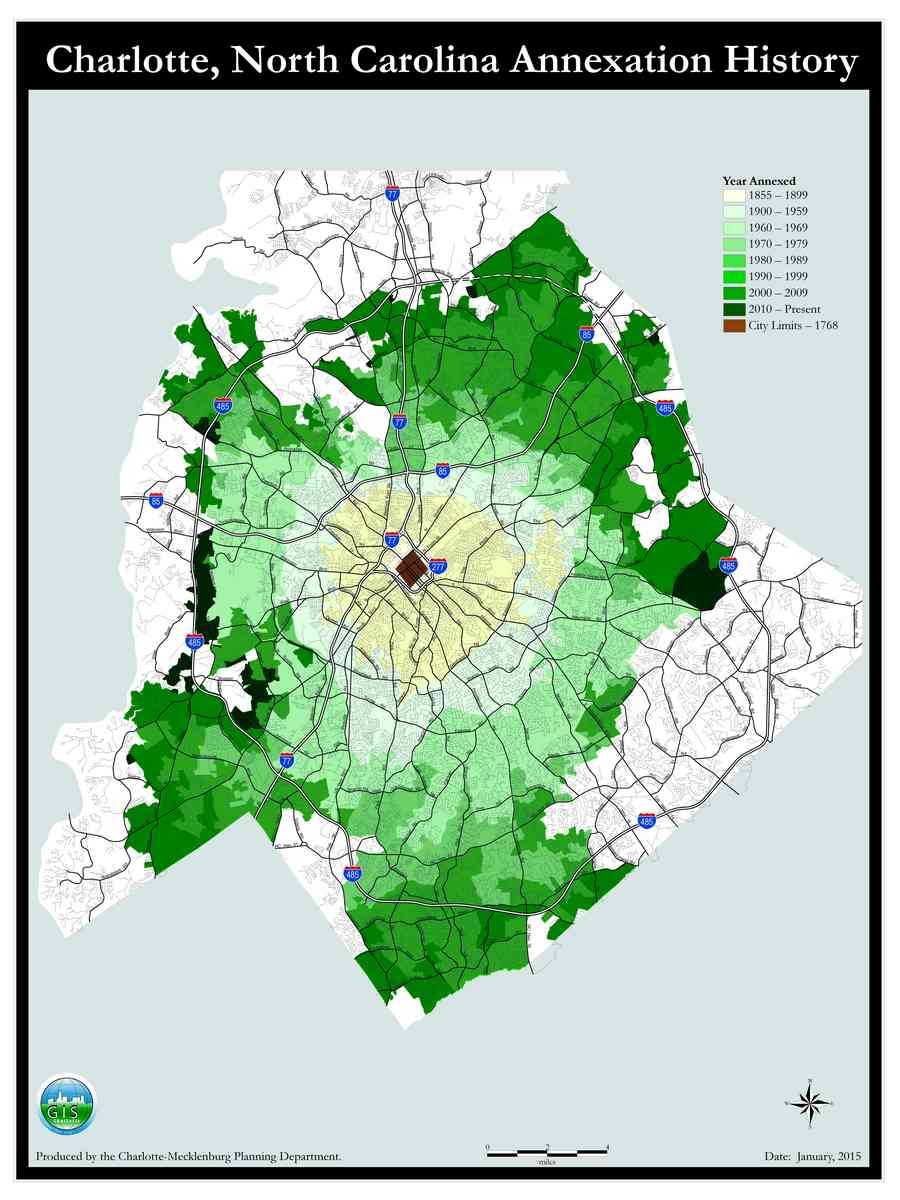Charlotte is growing – literally – as the city annexes more land

You’ve probably heard a few catchy statistics about Charlotte’s explosive growth: For example, the city’s population increased by 47 people a day from 2010 to 2018.
But did you know that over the same period, Charlotte also grew by more than a square mile each year?
Since 2010, Charlotte’s total land area has increased by almost 12 square miles. From its previous total area of just under 298 square miles, Charlotte is now closing in on 310 square miles. That means that in addition to growing its population by almost 20 percent this decade, Charlotte has also grown its land area by 4 percent.
So, if the old real estate truism about land (that they aren’t making any more of it) is true, how is Charlotte’s area growing? Through annexation, as the city absorbs more unincorporated parts of Mecklenburg County into its boundaries.
That ability to expand out is one crucial difference between Charlotte and many cities with similar populations. Seattle is 84 square miles, San Francisco clocks in at 47 square miles, Washington, D.C. is 68 square miles and Boston is about 90 square miles. While these cities are landlocked, either literally (by bodies of water) or figuratively (by adjacent municipalities), there are still thousands of acres Charlotte can potentially absorb.
Much of that land is, of course, around the city’s perimeter, especially in sites along the Interstate 485 outer belt. That means that as Charlotte’s population increases and the urban core grows, there are still big pockets of land that are likely to attract low-density, auto-centric development and then be incorporated into the city.
Since 2018, Charlotte has annexed or is set to annex 790 acres – more than a square mile. Here’s where that land is located, and what developers are building there:
Here’s how it works:
Since the N.C. General Assembly tightened involuntary annexation rules, starting in 2011, municipalities have mostly relied on voluntary annexation petitions. That means landowners, generally developers, approach the city and ask for their property to be incorporated into city limits. The fee to file a voluntary annexation petition is $400.
Charlotte City Council holds hearings on each petition, which are generally approved without much discussion. Once the annexation is approved, all city services (such as trash collection and street maintenance) are extended to the new parts of Charlotte. Some city services, such as police, fire and municipal water, are already provided to many unincorporated areas. Charlotte can’t add areas that are already part of one of the towns, such as Matthews or Pineville, unless the legislature were to de-annex the land first.
Annexation has historically been a major driver of Charlotte’s growth. In 1885, Charlotte consisted of about two square miles centered on Trade and Tryon streets. By 1950, Charlotte city limits still extended to just 30 square miles, less than a tenth of the city’s current land area. The city limits grew to 76 square miles in 1970, but Charlotte was still just a quarter of its current size. You can see how the city limits expanded dramatically over time in this map from the Charlotte-Mecklenburg Planning Commission:

Charlotte isn’t alone in expansion through annexation, of course, nor is it uniquely large (Witness Phoenix at 572 square miles, or Houston at 669 square miles). But annexations in Charlotte rarely attract controversy (check out how the fights between Atlanta, Fulton and Dekalb counties, for example).
The latest round of annexations will fuel Charlotte’s continued growth, mostly along the city’s periphery. Developers are planning to build 2,580 residential units and millions of square feet of warehouse space for Amazon. That number of residential units will likely add another 6,600 or so residents to the city’s population, as Charlotte’s boundaries grow a bit more.